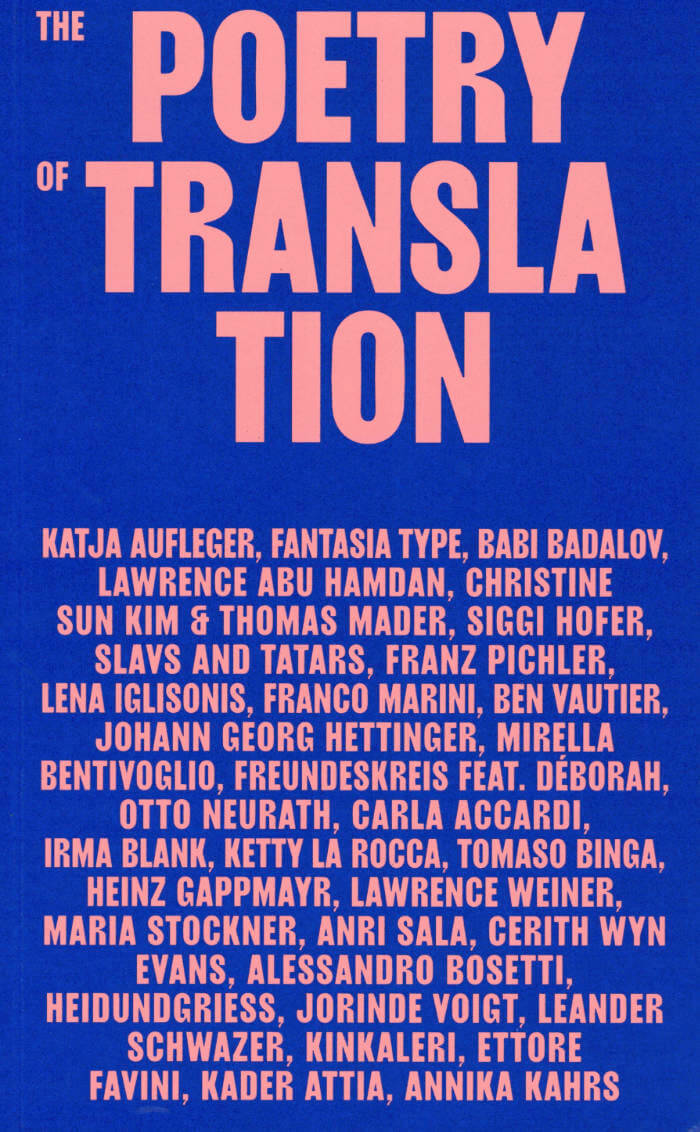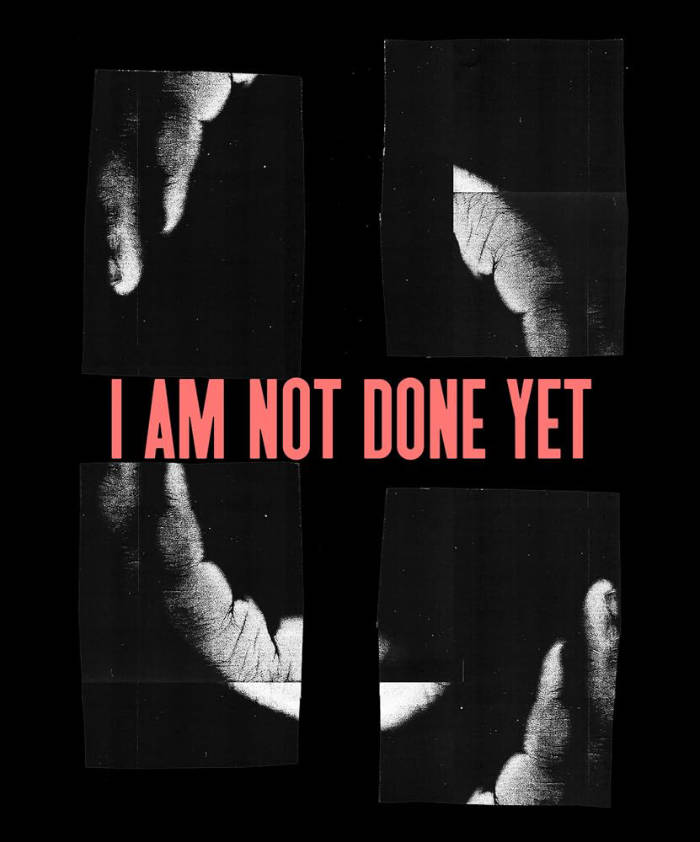
The Poetry of Translation
Judith Waldmann ed.
New perspectives on the process of translation from the works of more than thirty international artists.
"[…] what I consider to be one of the most important arts of the future: the art of translation."
—Édouard Glissant
With The Poetry of Translation, Kunst Meran Merano Arte investigates the compelling phenomenon of translation. Over seventy works by over thirty artists shed light on the process of translation from novel perspectives
Inspired by the living multilingual environment of South Tyrol and its eventful history of interethnic cohabitation, Kunst Meran Merano Arte offers the ideal context for a research on translation and questions surrounding identity, multiculturalism, and diversity. The essays and visuals included in the book address translation in its complexity: on the one hand, as a source of inclusion, international understanding, creativity, genius and poetry, while on the other as a cause of misunderstanding and exclusion. It is understood here as a creative process through which something new is always created.
Published on the occasion of the eponymous exhibition at Kunst Meran Merano Arte in 2021-2022, with Amelia Etlinger, Anna Esposito, Annika Kahrs, Anri Sala, Augusto De Campos, Babi Badalov, Ben Vautier, Carla Accardi, Cerith Wyn Evans, Christine Sun Kim & Thomas Mader, Elisabetta Gut, Ettore Favini, Franco Marini, Franz Pichler, Freundeskreis, Jorel Heid & Alexandra Griess, Heinz Gappmayr, Irma Blank, Johann Georg Hettinger, Jorinde Voigt, Kader Attia, Katja Aufleger, Ketty La Rocca, Kinkaleri, Lawrence Abu Hamdan, Lawrence Weiner, Leander Schwazer, Lena Iglisonis, Lenora De Barros, Lucia Marcucci, Maria Stockner, Marilla Battilana, Michele Galluzzo & Franziska Weitgruber, Mirella Bentivoglio, Otto Neurath, Siggi Hofer, Slavs and Tatars, Tomaso Binga.







